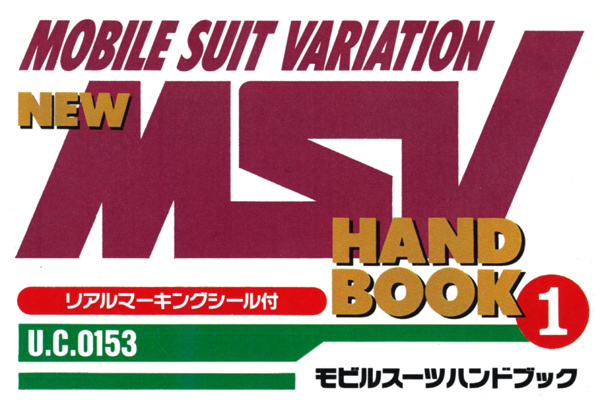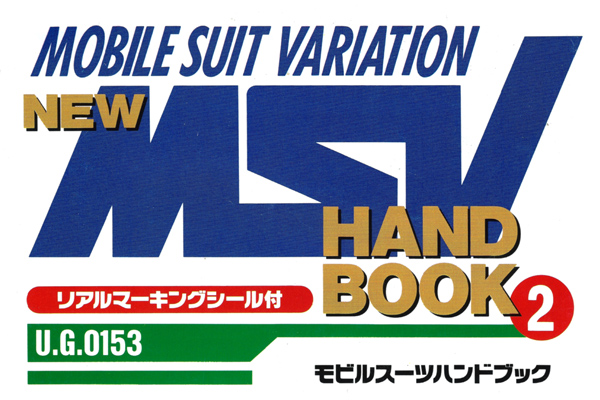GUNDAM F91 PLANNING MEMO AND PROPOSAL
MOBILE SUIT GUNDAM F91
PLANNING MEMO AND PROPOSAL
Stored in the Sunrise Planning Offices are two documents from the planning stages of Mobile Suit Gundam F91. One was drafted in May 1989 entitled “’90s Mobile Suit Gundam Planning Memo,” while the other was drafted in February 1990 under the name of “Theatrical Feature Animation Planning (tentative title) Mobile Suit Gundam F-91.” The former is the so-called “Tomino Memo,” a summary of the plot in the early stages, while the latter is a proposal created during full-scale production stages.
First, let’s retrace the elements that became the framework for Gundam F91 from the Tomino Memo. The Tomino Memo is a compilation of multiple memos exploring a new Gundam for completion in the ’90s.
CONCEIVING A ’90s GUNDAM
◉ PROCESS
It’s impossible to convey a story without a family dispute. An excerpt from a scrapbook made me consider this. By the time we get to Hathaway’s Flash, I think we’ve already overplayed the overview, or rather, exterior relationships. So, we’ll craft a story that looks at the problems that arise from a family because of a mother and father and the relationship between ideality and reality. (1988.12.17)
MOBILE SUIT GUNDAM PROPOSAL
SUBTITLE: FORMULA ZERO
◉ PROJECT INTENTION
The next Gundam will enter a new phase (era) in the truest sense of the word. For this, we are writing out this proposal with a readiness to release an entirely new work, assuming that it will fail if considered to be part of a series of past works.
◉ WHY STOP THE SERIES ROUTE?
With works that have been successfully adapted into series in the past, there was a backdrop where their main characters didn’t grow older and an absolute requirement that they could be serialized simply by changing the other characters. However, even nowadays, even though Part 2 and 3 are well-established, we rarely encounter works that surpass Part 1. This is a result of the fact that all creators are too obsessed with previous works, too busy playing it safe, and reluctant as a result to create something new. This is likely because the production of a series or a continuation of a work has the effect of atrophying the work itself.
The most important factor when considering the business of film is simply whether it’s a work that can be enjoyable to watch at the time. Moreover, in this genre, there is more that must be considered. The most crucial factor is that there have to be powerful ideas and a universal theme. To this end, I would like to begin working on a “second Gundam series” with consideration given to making everything new, the background setting notwithstanding, in order to dismiss the viewpoint of how older series were made. (1989.03.10)
The date above indicates that the company began working on the concept of the subsequent work shortly after the release of Char’s Counterattack. As such, in March 1989, a more detailed plan was presented. At this stage, while the title had yet to be decided, the keyword “formula” was already mentioned, along with the theme of the work, “family,” and the intention of a series. Incidentally, at this stage, the story still differs from the final version in the following areas:
-
- The organization that becomes the enemy is an “Assault Force (Crossbone Van),” an internal organization that attempts to reform the corrupt Earth Federation Forces. The backdrop of a rebellion against the Earth Federation Forces by an army with a noble consciousness is established.
- Seabook’s father is sent to an asteroid for forced labor after being caught for treason against the Crossbone Van.
- Seabook forms a resistance movement on the asteroid in order to save his father and captures the Gundam Formula Zero from the Crossbone Van.
- Berah Romah, a young commander and prototype for Cecily, is a beautiful woman dressed as a man. She adores Seabook’s Newtype talents yet doesn’t have any romantic feelings. She is the voice for the Crossbone Van organization.
Based on this Tomino Memo, the project was further scrutinized and compiled into a proposal for the next stage. By October 1989, the plan for Gundam F91 was changed from the initially envisioned television series into a theatrical production, and the production proposals penned afterward seem to have taken these changes into consideration.
◉ THEME AND POINT OF THE WORK
A coming-of-age story of youngsters in the space age: “love for family” and “love of humanity” portrayed against the backdrop of a future space war.
In this work, against that backdrop, the story evolves from the starting point of “family,” the most familiar and simple existence for boys and girls, who are the primary audience. One day, a war suddenly erupts. The main character, who throws himself into battle to protect his family and survive, is confronted with various “encounters and partings” and “love” amidst the flames of war. —— An Excerpt
The “family dispute” element, which was a proposed theme written as an “assumption” in the Tomino Memo, is presented more clearly as “love for family” and “love for humanity” in the work proposal in the form of “theme and point of the work.”
On the other hand, the storyline and setting have seen significant changes. While the name “Crossbone Van” remains the same, they have become a group/collective with tremendous power that upholds “noble obligation” (original text) and has already been portrayed as being involved with the battle at the school festival. In addition, the image of Cecily, a girl who attends the same high school that Seabook has feelings for and who is actually the granddaughter of the leader of the Crossbone Vanguard, had also been decided upon. The differences are mainly written only, with only minor differences, such as the Ronah family being written as Romah family and Cecily being Berah Romah/Cecile Fairchild, who is assumed to be a beautiful woman dressed as a man.
Also evident is the names of the space colonies were also prepared for the final draft of the scenario, such as Frontier IV being “Cosmo Babylonia.” As for the mobile suits, it was decided that Seabook’s mother was involved with the development of the Gundam F91 as a biocomputer engineer. As such, the story of mother and child is also an element that would be highlighted. On the other hand, the overall height of the mobile suits is still depicted as 18 meters, so it seems the setting of miniaturization and high performance was added later.
The first draft of the scenario was written in January 1990, and the fourth draft was sent up at the end of March, which would become the final draft. The scenario was reverified during its successive drafts, including the scene where Nadia, Cecily’s mother, confirms Carozzo’s true face, along with whether or not there would be or wouldn’t be a scene with Cecily and Seabook having a conversation at the end of the story.
Incidentally, the final draft of the scenario was initially subtitled “Mobile Suit Gundam F-91: The Children of Space,” but when it was released in theaters, it was simply titled “Mobile Suit Gundam F91.”




